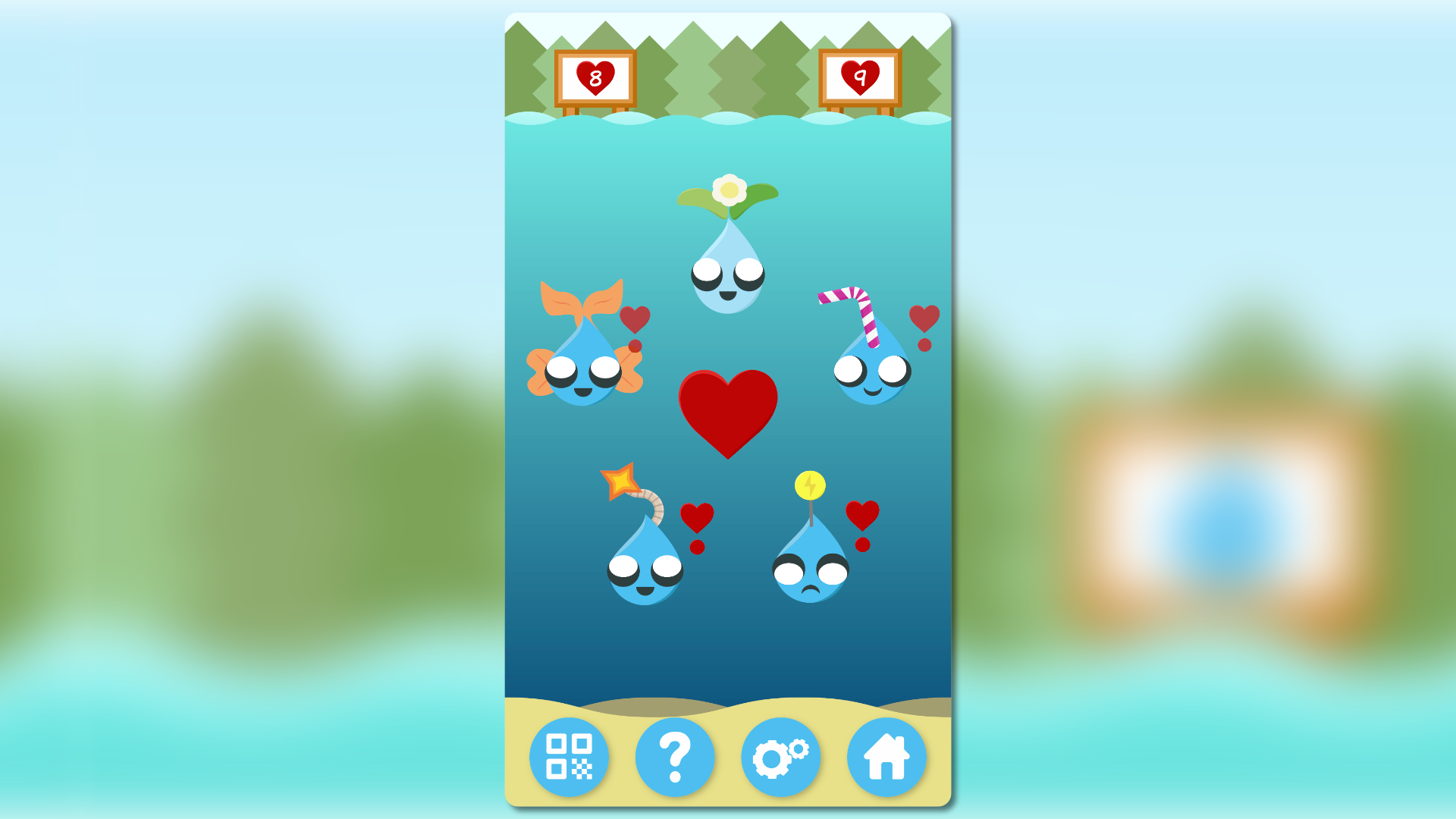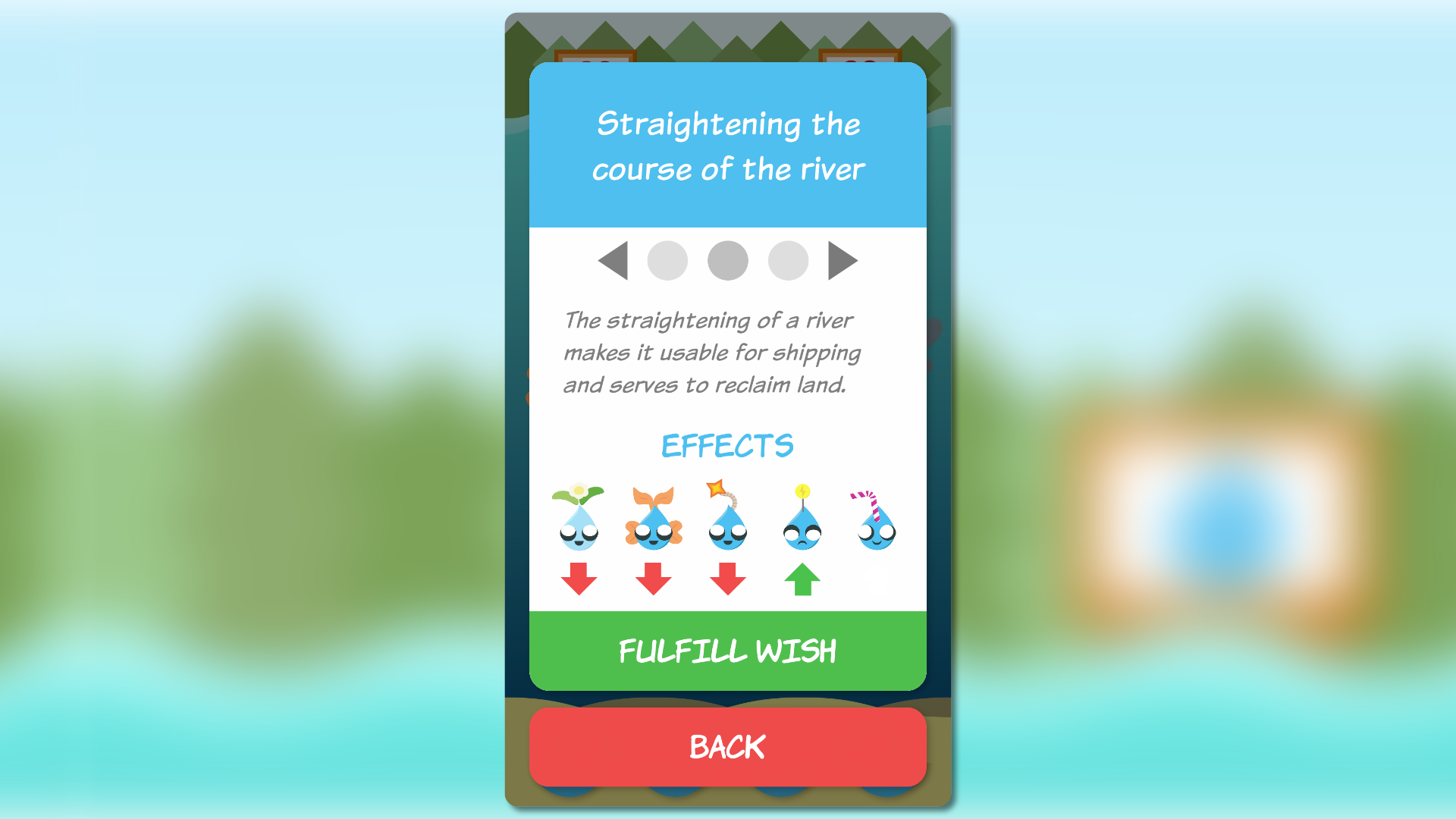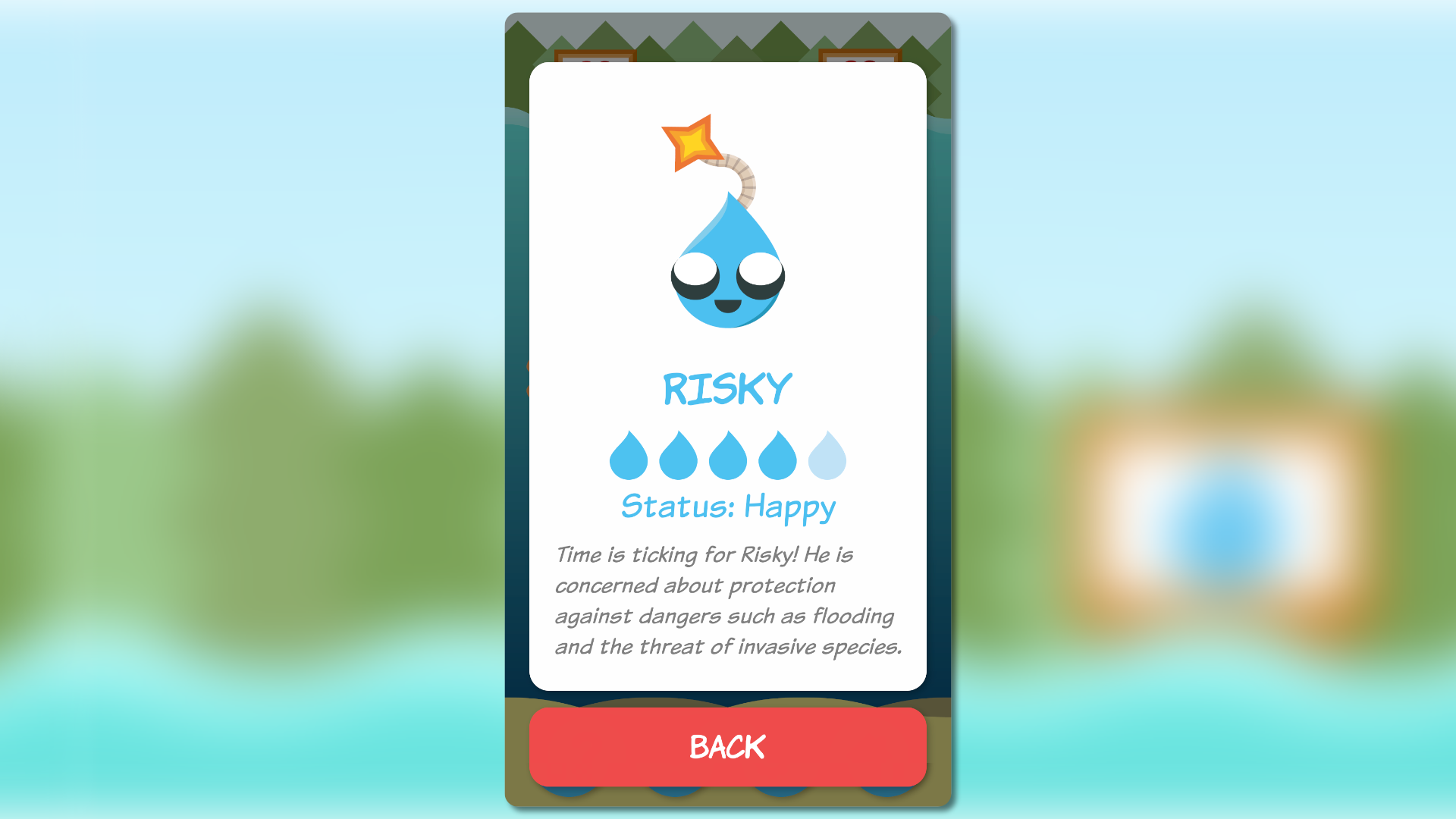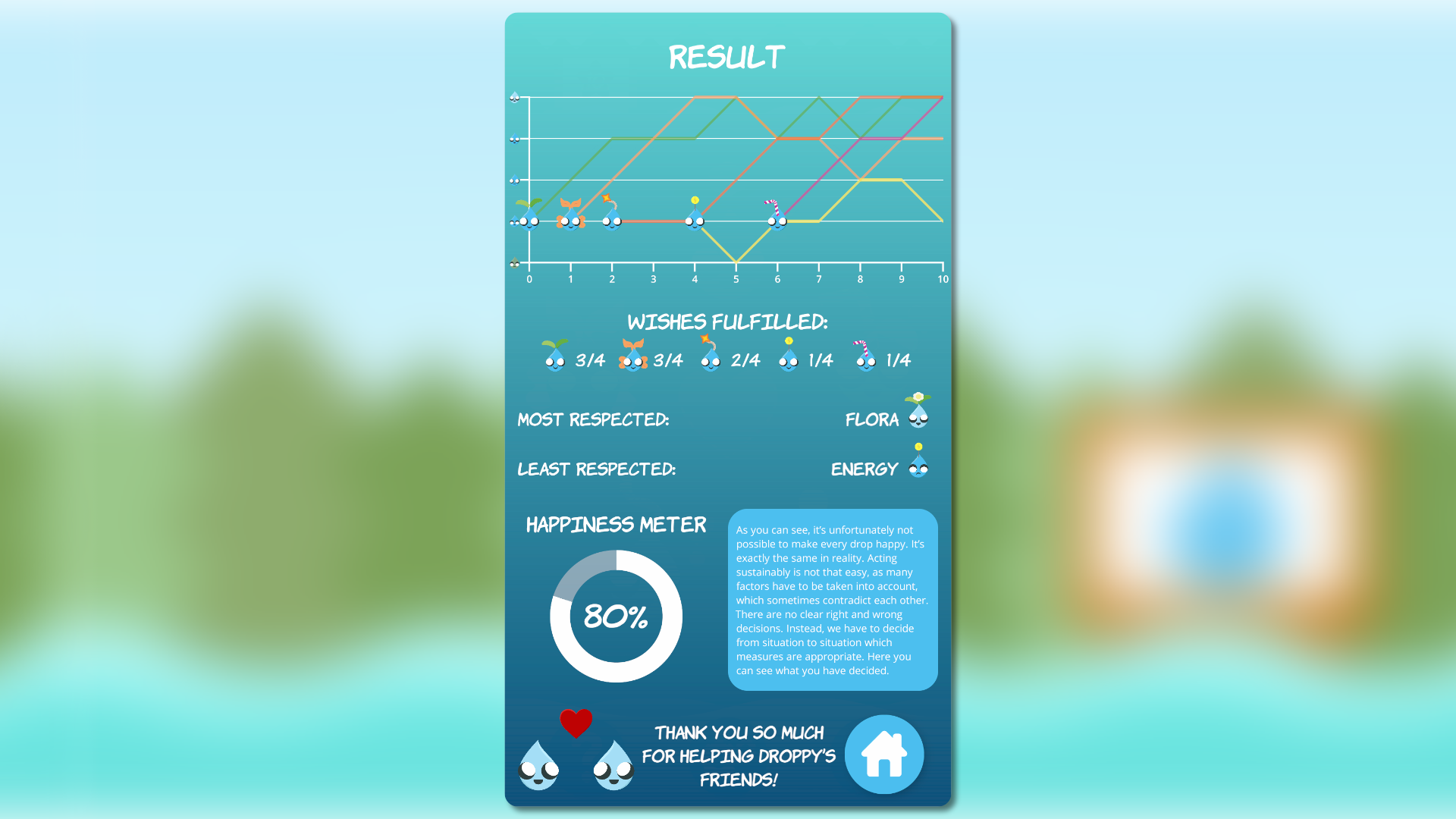Droppys Wasserlebnispfad
Droppys Wasserlebnispfad combines a game for mobile devices with a nature trail to teach sustainability skills and the responsible use of water as a resource. The development of sustainability skills requires experience in dealing with complex systems as well as sensitivity and emotional adaptivity. By adding a game-based application to the trail, the aim is not only to provide knowledge, but also to encourage active engagement with the topic, strengthen the awareness of nature, make it possible to experience the consequences of one's own actions, and promote common strategic behavior. For the following two reasons, games are ideal for combining strategic and emotional elements and, as a result, establish sustainable thinking and action.
- Games are complex systems. They consist of a set of interconnected rules that determine exactly how players’ actions affect the system. Games not only impart factual knowledge, but also clarify causal relationships and promote strategic thinking. Players must think ahead and assess the effects of their actions in order to be successful in the long run.
- Games have an emotional impact. In addition to the narration and presentation of settings and stories, the possibility of interactivity ensures a special kind of identification with characters, their actions and consequences. Sustainability is a sensitive topic that can be conveyed primarily on an emotional level by appealing to the conscience and responsibility of the recipients.
So-called "sustainability games" are usually complex and time-consuming games with high strategic content. Droppys Wasserlebnispfad, on the other hand, is played alongside a nature trail. Thus, there is no time to explain complex rules. The game must be easy to pick up and play. This requirement stands in stark contrast to the goal of promoting strategy management in complex systems by requiring players to recognize interdependencies and make differentiated decisions in the face of multi-layered problems for which there are often no simple solutions. These considerations underlie the following concept of Droppys Wasserlebnispfad.
At the center of the game is the character Droppy, who lived happily with his friends in the clouds until one day it suddenly started raining. The drops fell to the earth and were separated from each other. At the beginning of the game, Droppy asks the player to help him find his friend. Now the player’s task is to collect all the drops and, by making decisions in the course of the game, ensure that they will be happy in their new home (the river where the nature trail is located). There are five different drops in total, each of which represents a different factor that is relevant to the sustainable use of water as a resource.
- Droppy is especially attached to the flora.
- Goldie, as an animal lover, cares most about the fauna in and around the water.
- Risky is concerned about protection against dangers such as floods and the threat of invasive species.
- Zippy is particularly fond of hydroelectric power generation, for example with the help of dams or power plants.
- Strawley is interested in the production of drinking water and does not like wasting water.
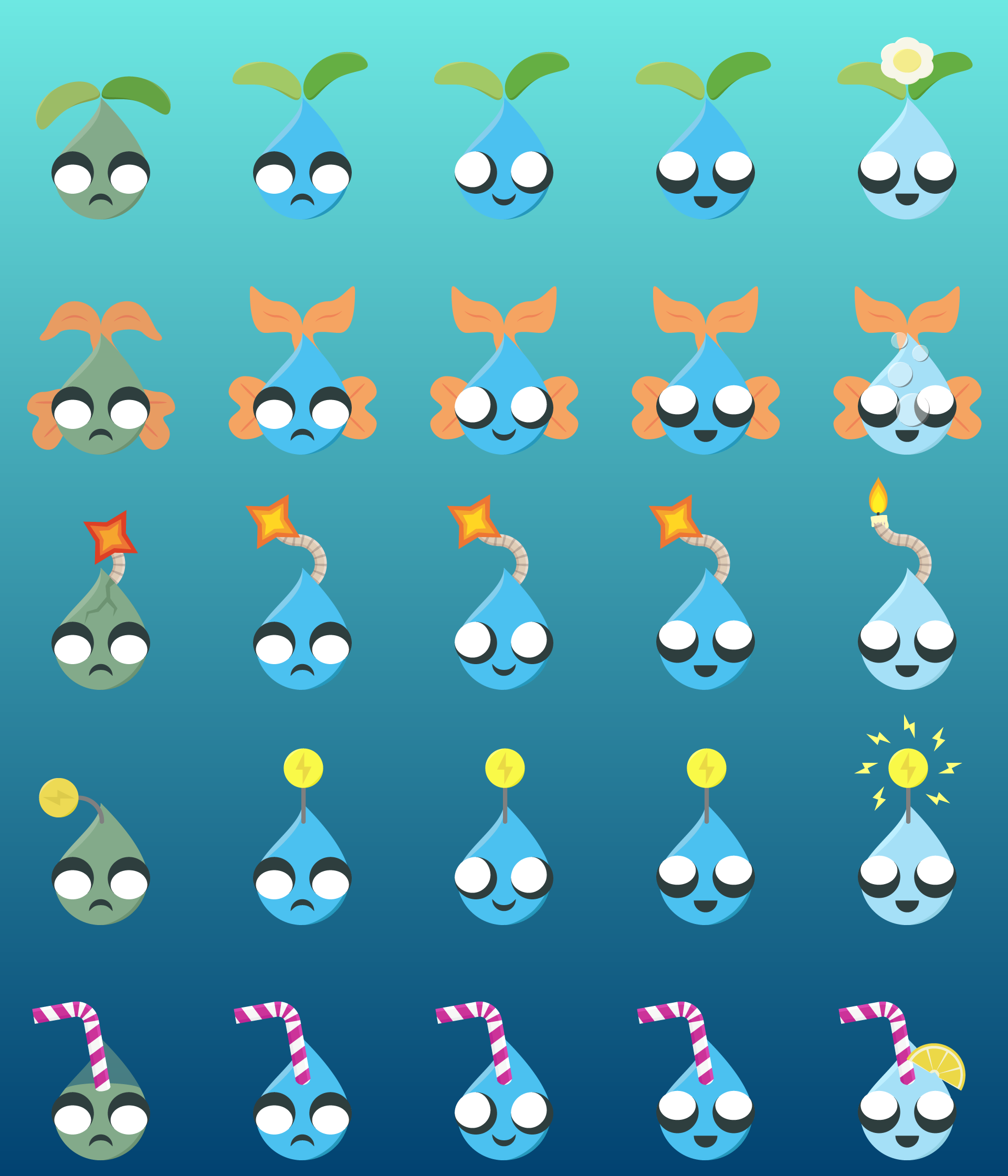
The player's decisions influence whether the drops become happy or sad after a wish is fulfilled. Each drop expresses wishes during the course of the game that would support its respective interests and make it happier. However, most wishes influence several factors and thus also change the state of other drops. The fulfillment of a wish can therefore make some drops happier and others unhappier. If a drop gets very unhappy, it falls sick. This also negatively affects the happiness of neighboring drops. The idea is to prevent players from focusing only on certain drops and neglecting others. Instead, the goal is to take all factors into account and achieve a balance.
The nature trail consists of a total of ten stations on different topics (flora and fauna, floods, drinking water, etc.). At each station there is an image target that the player can scan with the smartphone camera. By doing so, new drops are found and new wishes are unlocked that are thematically related to the station. However, only one wish can be fulfilled after each station. Unfulfilled wishes do not expire, but remain. Thus, not only the number of drops to be managed grows, but also the catalog of measures to be able to respond to individual challenges that arise in the course of the game.

The elegance of Droppys Wasserlebnispfad lies in its simplicity, through which it portrays a complex structure where various factors and interests must be weighed against each other. It becomes clear that there is no one ultimate solution. Players must constantly rethink and adapt their strategies in order to act situationally and flexibly. In Droppys Wasserlebnispfad, these core skills are not only taught, but actively applied. The skills learned correspond to the necessary prerequisites for sustainable ways of thinking and acting: Practice in dealing with complex systems, sensitivity to critical contexts, strategic action, and emotional adaptivity.
Droppys Wasserlebnispfad was developed as part of the research project "Sustainability Competence" at the Harz University of Applied Sciences under the direction of Prof. Dr. Ulrike Starker, Prof. Dominik Wilhelm and Prof. Dr. Andrea Heilmann. A scientific publication on the procedure, implementation and results of the research project can be found here. My area of responsibility consisted of developing the idea and game design, creating the graphical art and also the technical implementation in Unity. Unfortunately, the associated nature trail was never realized, which is why the game has not been applied in the originally intended context. After the end of the project, I therefore added a game mode that works without the required image targets and published the game in the Google Play Store to be available to everyone free of charge. The image targets can be downloaded here, so that anyone can use the app in various educational contexts by building their own adventure trail.
Development period:
March 2018 - November 2018
Technologies:
Unity | Adobe Illustrator
Other project members:
Prof Dr. Ulrike Starker | Prof. Dominik Wilhelm | Prof. Dr. Andrea Heilmann | Project team "NAHAKO"


